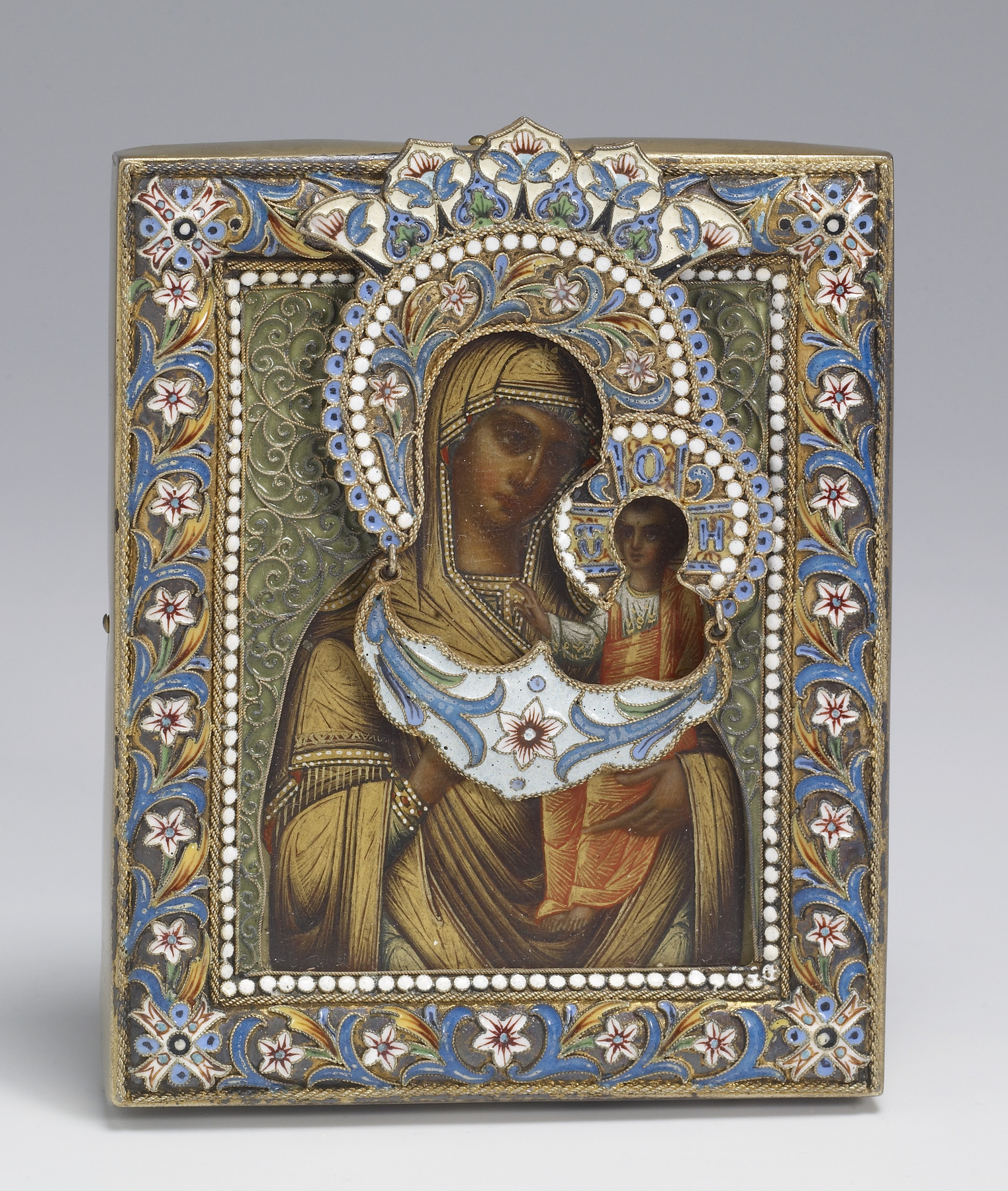Kazan Mother of God Icon with Oklad
(18th and 19th Centuries )
The silver gilt oklad is adorned with a full "wardrobe" consisting of a raised halo and a diadem, and a detachable collar connected by two loops. Rows of white enameled dots resembling pearls outline the two halos and the borders of the central image. The Mother's halo is decorated with flowers in painted filigree enamel whereas the Child's has the cross. On the large collar is a pink and white blossom flanked by blue and green leaves against a white ground. The background is in olive with filigree spirals. Bands of white and red blossoms and blue and green foliage border the oklad. In each corner is a cross.
The Icon is painted in oil pigments over wood and is backed with velvet. The Kazan Mother of God is one of the major Mother of God icons in the Russian church. The image was derived from an icon which, in the thirteenth-century, was sent from Constantinople to Kazan, a city of the Volga River. After the Tartars invaded the city in 1438, the icon was lost, but it was rediscovered one hundred years later through the dreams of a ten-year old girl.
Inscription
Provenance
Provenance (from the French provenir, 'to come from/forth') is the chronology of the ownership, custody, or location of a historical object. Learn more about provenance at the Walters.
Jean M. Riddell, Washington, D.C. [date and mode of acquisition unknown]; Walters Art Museum, 2010, by bequest.
Exhibitions
| 2017-2018 | Fabergé and the Russian Crafts Tradition: An Empire's Legacy . The Walters Art Museum, Baltimore. |
Geographies
Russia, Moscow (Place of Origin)
Measurements
Overall H: 3 3/4 × W: 2 15/16 × D: 13/16 in. (9.5 × 7.5 × 2.1 cm)
Credit Line
Bequest of Mrs. Jean M. Riddell, 2010
Location in Museum
Not on view
Accession Number
In libraries, galleries, museums, and archives, an accession number is a unique identifier assigned to each object in the collection.
In libraries, galleries, museums, and archives, an accession number is a unique identifier assigned to each object in the collection.
44.819


